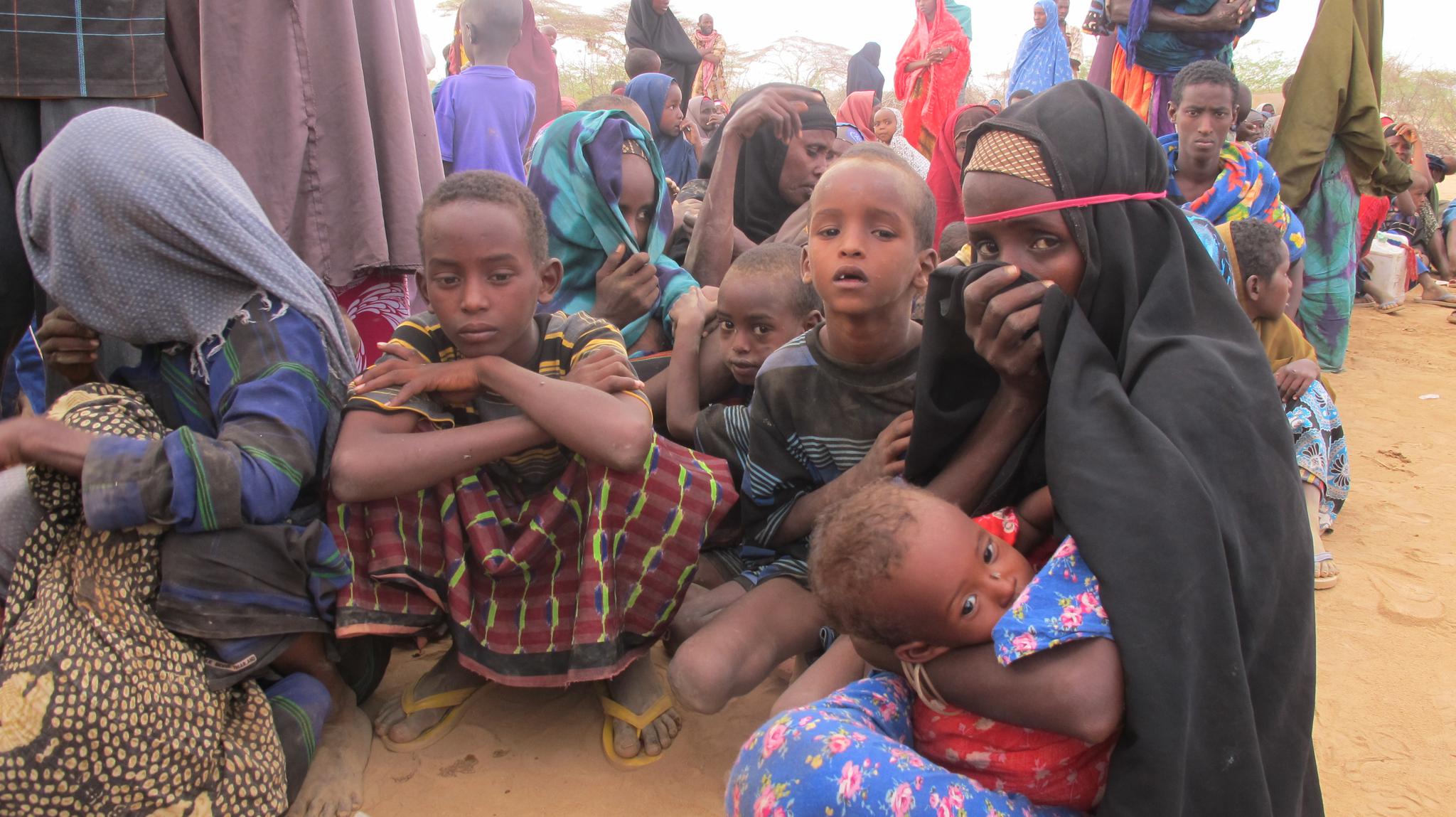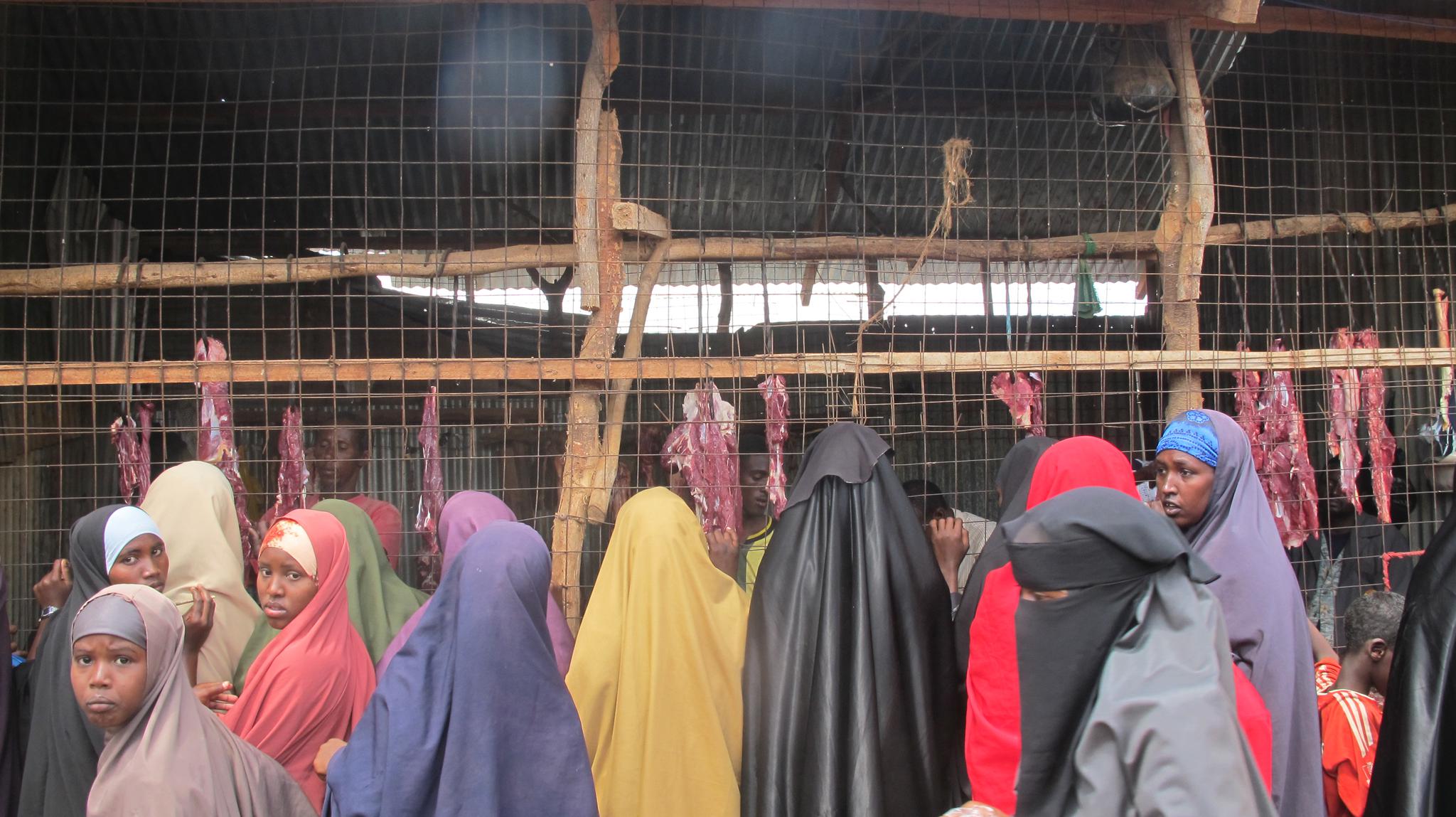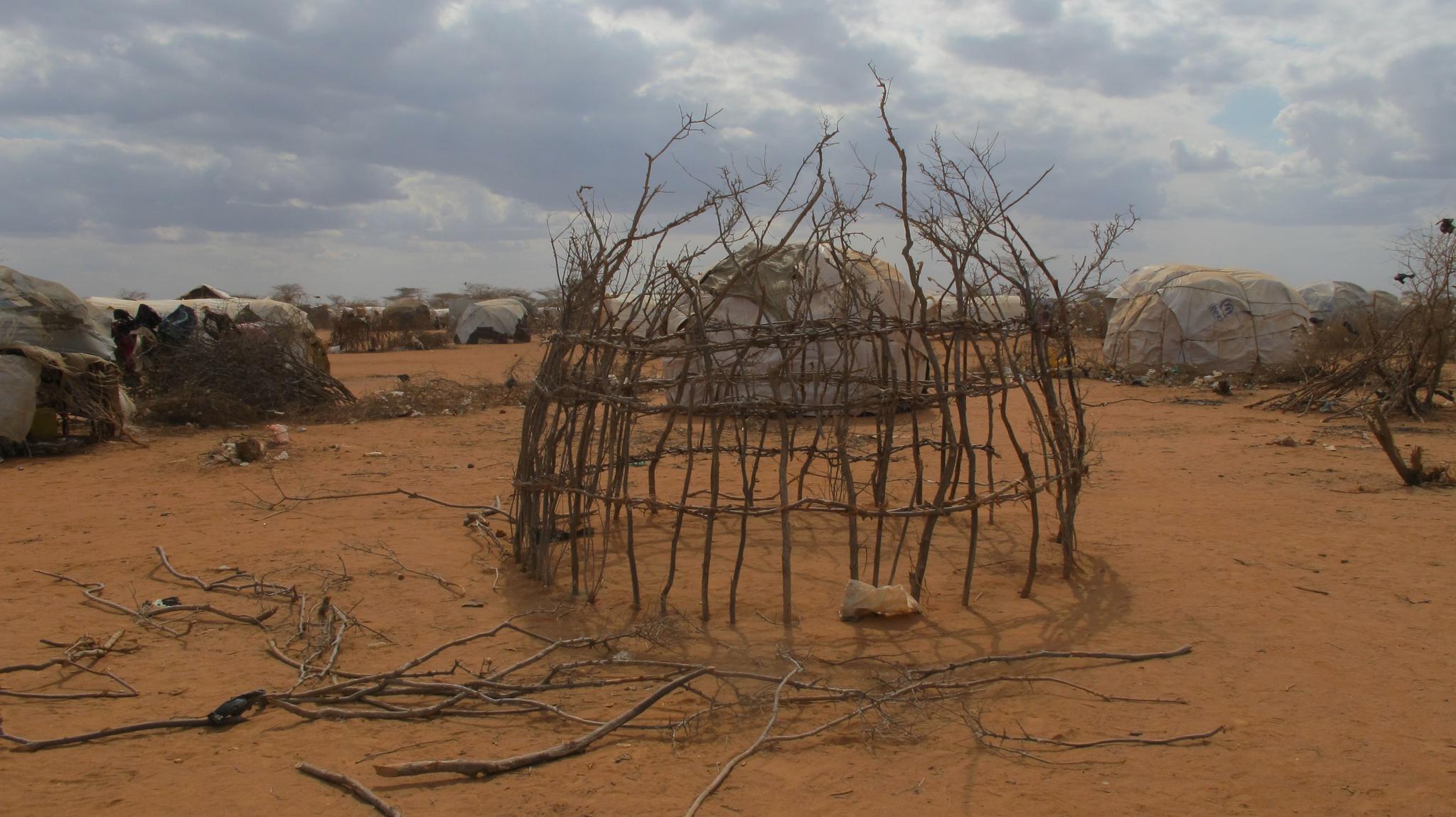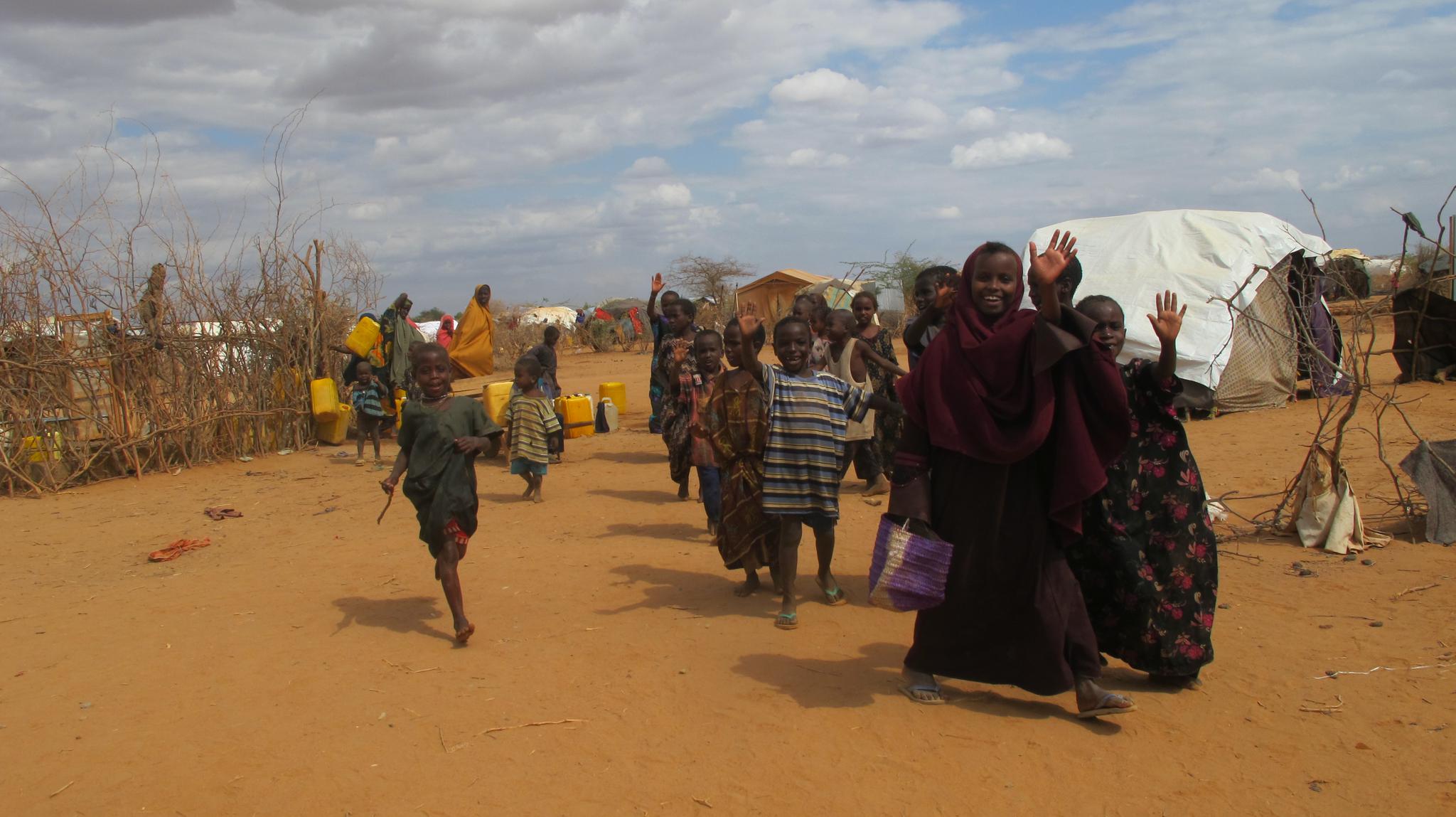Biggest Refugee Camp in the World Turns 20 Amid Humanitarian Crisis
Giovana Sanchez
In Dadaab, Kenya
[Original story in Portuguese]
 Woman and her family wait to enter Dadaab (Giovana Sanchez/G1)
Woman and her family wait to enter Dadaab (Giovana Sanchez/G1)
For twenty years, the routine has been the same: they arrive with nothing but the clothes on their backs, exhausted from the hikes that took weeks, sometimes months, hungry and looking for shelter. The gates of Dadaab, the largest refugee camp in the world, in Kenya, never closes — and the complex, designed to house 90,000 residents, is packed. In recent months, it is overcrowded: the worst drought to hit the Horn of Africa in 60 years is causing at least 800 people to knock on Dadaab's doors daily. G1 was on the field between August 1st and 3rd to show the structure, the daily life and the difficulties of those who live permanently in a temporary home.
To pass through Dadaab's gateway is a victory. Those who made it here survived leaving their homeland, days of walking in a heat of 40°C, facing the danger of rapists and wildlife, of hunger and thirst. Newcomers are registered, evaluated by a doctor and receive a basket of food for up to 21 days — which can be renewed. Then the problem is finding a roof: since 2008, when the camp was declared full, the United Nations High Commissioner for Refugees (UNHCR) no longer distributes tents. People make a home with what they find, from sticks to plastic bags.
Dadaab was built in 1991 when the civil war broke out in neighboring Somalia following the fall of dictator Mohamed Siad Barre. The United Nations (UN), with the approval of the Kenyan government, has set up three camps in the border region (where Somali people already lived): Ifo, Dagahaley and Hagadera — each housing up to 30,000 people. The camp was expected to serve as a temporary house for those who fled, so they could return home as soon as the conflict was over. But 20 years later, nothing has changed.
"The solution is to provide peace in Somalia, and Kenya alone cannot achieve peace in Somalia! So we need to have deliberate and committed strategies on how to bring this issue to the UN, perhaps even to the Security Council. Because the number of people is too big. I don't know how long we can take care of these people," explains Kenyan refugee affairs officer Badu Katelo.
The difficulties in feeding and helping Somalis in Somalia are many. Since 1991, the country has been divided by groups fighting for power. Among them is al-Shabaab, which wants to impose an Islamic regime in the country. Linked to the al-Qaeda, the group controls the southern part of Somalia, where, according to their rules, few humanitarian agencies can access.
The organizations working in Dadaab receive help from all over the world. For this current crisis, for example, an international appeal was made in July, and by August 3, at least $ 24 million was raised from European countries, the US and the private sector.
 Women selecting meat in one the the camp's street markets (Giovana Sanchez/G1)
Women selecting meat in one the the camp's street markets (Giovana Sanchez/G1)
But much remains missing in Dadaab: sewage, running water, paved roads, power, dignity and recognition. The Kenyan government does not give refugees citizenship and they cannot leave the camp without an official permit — given to only 2% of residents in 2010.
"The first reason Dadaab has become the largest camp in the world is that the conflict in Somalia has lasted two decades," says the Professor of Refugee Studies of the Moi University Dulo Nyaoro. "But there is also the fact that a camp can only be temporary if the international community seeks lasting solutions to the Somali problem. It is a huge population whose life has been 'suspended.' They cannot make decisions for themselves, can not use their skills or participate in the economy of their home countries," says the professor.
The host's drama
The Kenyan government fears Dadaab will become a permanent settlement and is pushing for aid to be sent directly to Somalia. Last year, Kenya suspended the construction of an extension of one of the camps (Ifo 2) for "security reasons." In July, with the current crisis, the country faced pressure and agreed to open the new space, where 30,000 refugees have been relocated in the last days.
Kenya's Prime Minister Raila Odinga said the government's response to the drought had been the best in the last five years and called for refugee entry to be monitored in order to prevent al-Shabaab infiltration. "We are paying a price as if we were contributing to this crisis. So we are asking the international community to come and help," he said last week in his speech to Parliament.
 Refugees make their houses with whatever material they find on the ground (Giovana Sanchez/G1)
Refugees make their houses with whatever material they find on the ground (Giovana Sanchez/G1)
Routine and structure at Dadaab:
1st step: The Arrival
Those arriving in the camp first have fingerprints taken at the UNHCR tent -- the UN refugee agency. Soon after, they undergo a medical evaluation at the Doctor's Without Borders tent. Children are vaccinated, weighed and measured. Depending on their level of malnutrition, they can be hospitalized directly. If the case is not serious, families receive guidance for follow-up at one of the camp's clinics.
The last step is the food basket with 21 days of provisions, distributed according to the number of family members. Each member receives 4.4kg of flour, 4.4kg of cornmeal, 1.2kg of beans, 600g of oil, 100g of salt, 420g of sugar and 945g of a fortified corn and soy blend.
Depending on the season, they can receive kitchenware and blankets. From there, it is up to the newcomer to find a place to settle. Tents are usually made with sticks and covered with cloth and pieces of plastic bags -- or whatever else refugees might find along the way.
The initial step allows the newcomer to get food, but does not guarantee the official registration in the camp. By having their fingerprints in the system, each refugee gets a password with a new date to attend the registration center in the Ifo camp. The wait for registration can take up to two months. Meanwhile, according to humanitarian agencies responsible for donation, it is possible to get more food baskets.
 Refugees in Dadaab (Giovana Sanchez/G1)
Refugees in Dadaab (Giovana Sanchez/G1)
Where to get food
Once officially registered as a refugee in Dadaab, it is possible to get food twice a month at distribution points scattered throughout the camps. There are also water delivery points, but everything is still poor quality by food safety standards. According to Doctors Without Borders, the recommended volume of water use per day per person is 20 liters. The number in Dadaab is between three and four.
In addition to being donated, food can also be bought -- there are a lot of people selling in front of distribution centers. It is not forbidden to sell what people receive as aid.
School
There are primary schools in every field, but there are not enough spots for everyone to complete high school. There are no universities in Dadaab, although in some rare cases youth get scholarships and permission to study in Nairobi, the capital of Kenya, or in another country. "But there is nothing to do with the diploma," says refugee Moulid Iftin, who is 23. In fact, they cannot, by law, work, and even if they could, there are no positions compatible with the university degree in the camp. Still, many young people dream of finishing college.
Work
Since they are not recognized as citizens, refugees have no legal right to work. But that doesn't mean they don't. In the past 20 years, Dadaab developed its own economy. Trade is the main source of income for refugees. And the street markets have everything: from basic items like food and clothing to perfumes, movies and toys.
For more elaborate services, such as a tailor -- a profession practiced only by men in Dadaab -- training is provided by non-profits in the field.
Safety
Dadaab's security is handled by the Kenyan police. The UN hires a private company to take care of the surroundings of its headquarters and offices. There is a curfew for aid workers: they cannot leave their base after 6 pm or before 7 am. For journalists, transportation must to be provided by an armed police convoy or armed escort.
From January to June this year, 358 incidents of gender-based violence were reported in Dadaab -- almost five times more than the same period of 2010.
Transportation
Cars and vans take refugees between camps for $1 on the shortest route and $2 on the longest. Most refugees, however, walk.
Post a comment